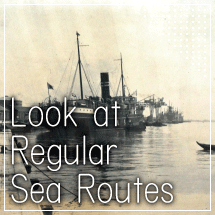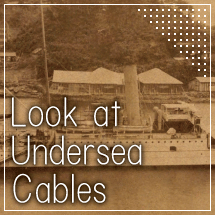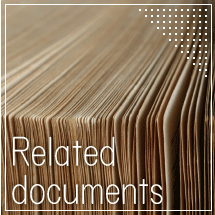
Viewing Meiji Japan's Engagement with Asia through the Archives : The External Infrastructure and Network
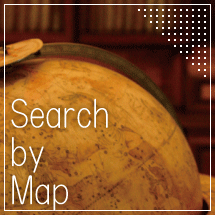
This map can be used to look up such things as the distribution of government institutions around Japan, diplomatic establishments around East Asia, lighthouses, mines, and the like, and also to find related materials on those topics.
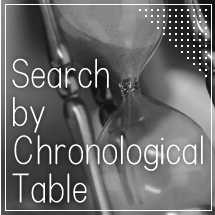
This chronological table presents in temporal sequence information about changes and developments in central government institutions and administrative organization during the Meiji period, as well as legislation and societal occurrences and events. The table can be used to search for materials related to the subjects presented therein.
Before the Meiji Restoration, Japan's interactions with foreign countries had been limited.
After those events, however, it moved to engage systematically in negotiations and exchanges with them.
Also, after the course of several wars Japan expanded its sphere of influence around East Asia.
This resulted in frequent human and material exchanges between the Japanese mainland and its diplomatic establishments abroad as well as colonial administrative organizations.
This called for language study and knowledge of international law and other topics so Japan could engage in diplomacy.
More than that, it also required creating networks of regular shipping routes and telegraph lines so people could travel back and forth and communicate with foreign countries; acquiring technologies and skills related to transportation and telecommunications such as iron making, shipbuilding, harbor improvement, and lighthouse building and acquiring technologies and skills in civil engineering and manufacturing.
There was also an urgent need to augment the educational offerings in order to cultivate the human talent that could apply these various new technologies and skills related to transportation, telecommunications, civil engineering, and manufacturing.
This special exhibition focuses on the relationship between Japan and East Asia during the Meiji period.
It spotlights the changes that occurred during those years at central and local government institutions—particularly those involved with diplomatic affairs—and at specialized educational institutions of all types, and also the work done to create and maintain the transportation, telecommunication, and manufacturing infrastructure at the time.
The exhibition does this in order to explore the question of what kind of relations Japan built with the Western powers and its closest neighbors in Asia.
Three of the thematic sections—"Map-Based Search," "Look at Regular Sea Routes," and "Look at Undersea Cables"—allow you to use a map to explore such matters as the distributions of diplomatic establishments abroad, lighthouses, and mines, and the state of work that was being done to establish regular sea routes and lay undersea communication cables.
Through this map, you can search for materials related to the map listings at hand.
![Viewing Meiji Japan's Engagement with Asia through the Archives : The External Infrastructure and Network [JACAR Glossary]](../images/logo.png)
